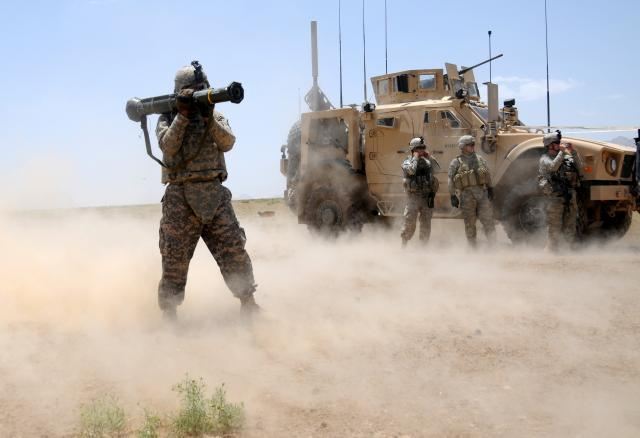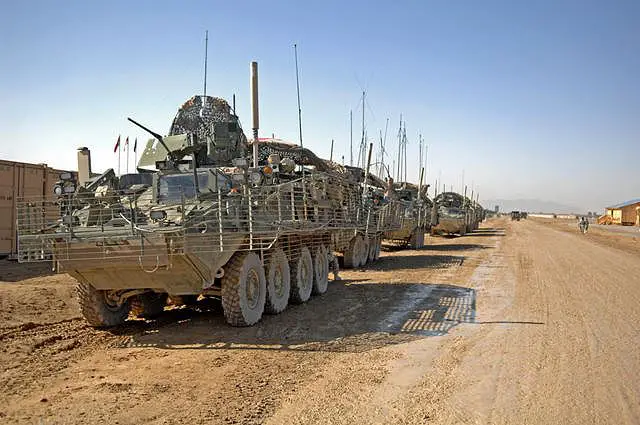| a | |||
Defense News - United States |
|||
| Monday, November 7, 2011, 01:07 PM | |||
| United States Army Stryker brigade without Stryker vehicles in Afghanistan but with M-ATV MRAP. | |||
The
United States Army is sending a Stryker brigade to Afghanistan without
their Stryker armored vehicles. Instead of their 19 ton Strykers, that
carry 11 troops, they will be using 15 ton M-ATV
armored trucks, which carry up to five troops each. The reason for this
is that the M-ATV
provides more protection from roadside bombs. While the brigade will have
to operate more vehicles, they will have more firepower (each Stryker
and M-RAP has a single remotely controlled machine-gun turret atop it).
|
|||
 U.S. army M-ATV Oshkosh MRAP All-Terrain vehicle in Afghanistan. |
|||
|
The
M-ATV (MRAP-All Terrain Vehicle) is a 15 ton, 4x4 (with independent
wheel suspension) armored vehicle. Payload is 1.8 tons, and it can carry
five passengers (including a gunner). Top speed is 105 kilometers an hour,
and range on internal fuel is 515 kilometers. The M-ATV
is slightly larger than a hummer.
The reason for the M-ATV
is that all other MRAPs are, after all, just heavy trucks. And the capsule
design that protects the passengers so well also produces a high center
of gravity, which makes the vehicles prone to flipping over easily. They
are also large vehicles, causing maneuverability problems when going through
narrow streets. Most MRAPs don't have a lot of torque, being somewhat
underpowered for their size. And, being wheeled vehicles, they are not
very good at cross country movement (especially considering the high center
of gravity.) The M-ATV
was designed to deal with all of these problems. |
|||
 U.S. Army Stryker with Strykshield armour in Afghanistan |
|||
United States Army Stryker brigade without Stryker vehicles Afghanistan with M-ATV MRAP 0711111
- Posted On














